Watching fluffy balls that suck milk from a cat is touching. However, the birth of kittens is a joyful event for the owners and a great responsibility. Indeed, at 8-13 weeks, these weak creatures gradually transition from high-calorie mother’s milk to food their owners offer. Many people mistakenly believe that a child should always have access to tasty food. But this approach to feeding kittens needs to be corrected. This does not mean that kittens should starve, but overeating is also harmful because these little ones do not yet know a sense of proportion. At the same time, deciding what kind of food the kitten’s fragile and sensitive body needs is essential.
Rules for feeding kittens based on age
When feeding kittens, it is first essential to consider their age. Specific changes in its body characterize different periods of a pet’s life. As you grow into adulthood, the diet should change, including the necessary vitamins and minerals.
Kitten at one month
At the 3-4th week of life, the kitten can fully feed only on its mother’s milk. Starting from the first month, veterinarians recommend feeding small animals. At this time, they begin to become actively interested in new products. It is essential to limit your furbaby’s access to unhealthy foods. Since the kids have not tried anything other than milk, they should start with products that are similar in consistency. The baby may not accept other food. This could be baby food (for example, meat purees, which you can buy or prepare yourself in a blender).
Purrs will also enjoy pureed boiled vegetables (carrots, pumpkin, cabbage, etc.). Under no circumstances should they be raw since the kitten’s stomach is still too weak to digest them. You should not give up dairy products (milk, kefir, fermented baked milk). Supplementing kittens’ essential diet with cottage cheese will provide growing organisms with calcium, which is involved in forming teeth and bones. If the baby is separated from the cat too early and does not know how to eat alone, you must feed him from a pipette or give him liquid food.
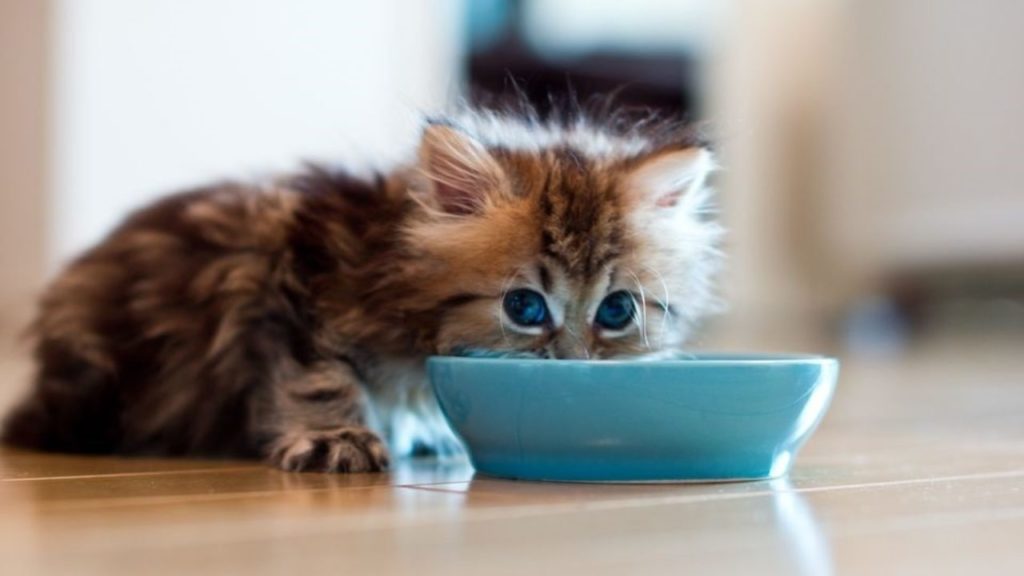
Kitten at two months
Feeding kittens at two months, including exceptional dry food and raw vegetables, differs from the previous period. The jaws of two-month-old fluffies can already chew solid food, so there is no need to grind vegetables and boiled meat in a blender to the consistency of puree. They will even enjoy chewing small pieces of food, feeling like a natural predator. Additionally, pets can be fed low-fat sea fish without bones, cereal porridges, and sprouted wheat or oat sprouts.
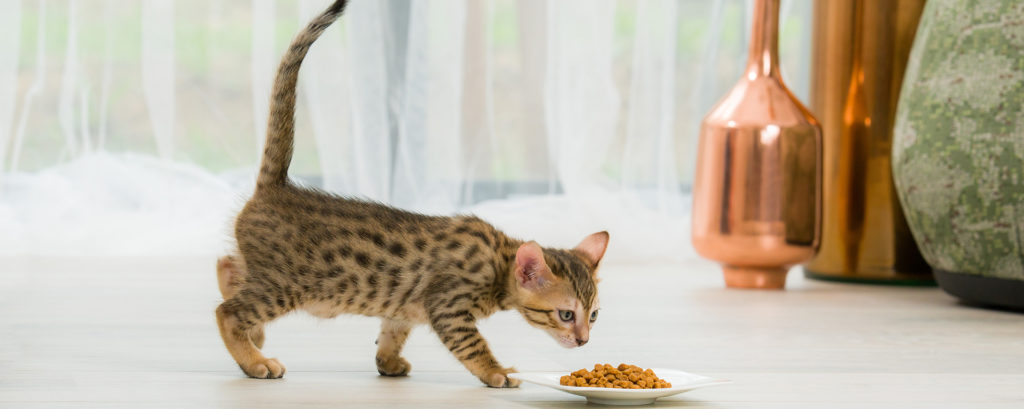
Kitten at three months
To help kittens develop their teeth properly, you need to give them solid food in large chunks. This will allow you to create a chewing reflex. You can feed animals raw meat at three months, preferably chicken or veal. But it is worth remembering that low-quality meat can cause helminths. Also, the diet of 3-month-old tailed animals may include boiled seafood (necessarily without bones), raw vegetables in small pieces, and dairy products (milk, low-fat sour cream, yogurt, and cottage cheese with minimal fat content).
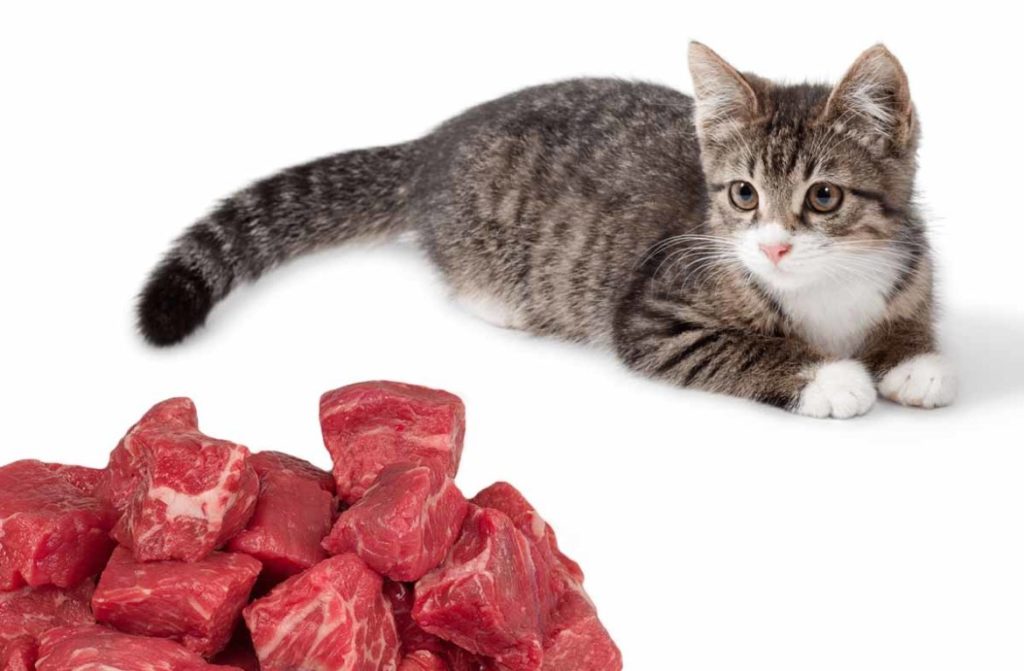
Kitten at 4-6 months
During this period, kittens begin to increase and gain weight. Therefore, you should make their diet as balanced as possible. The products can be left the same, but you must include a few meals with maximum protein content. This is necessary for kittens’ harmonious development and their muscle mass growth. You should not exclude boiled or fresh vegetables, which will provide growing organisms with vitamins and improve intestinal function. Since babies’ jaws are fully formed at four months, you can give them large pieces of meat and small bones.
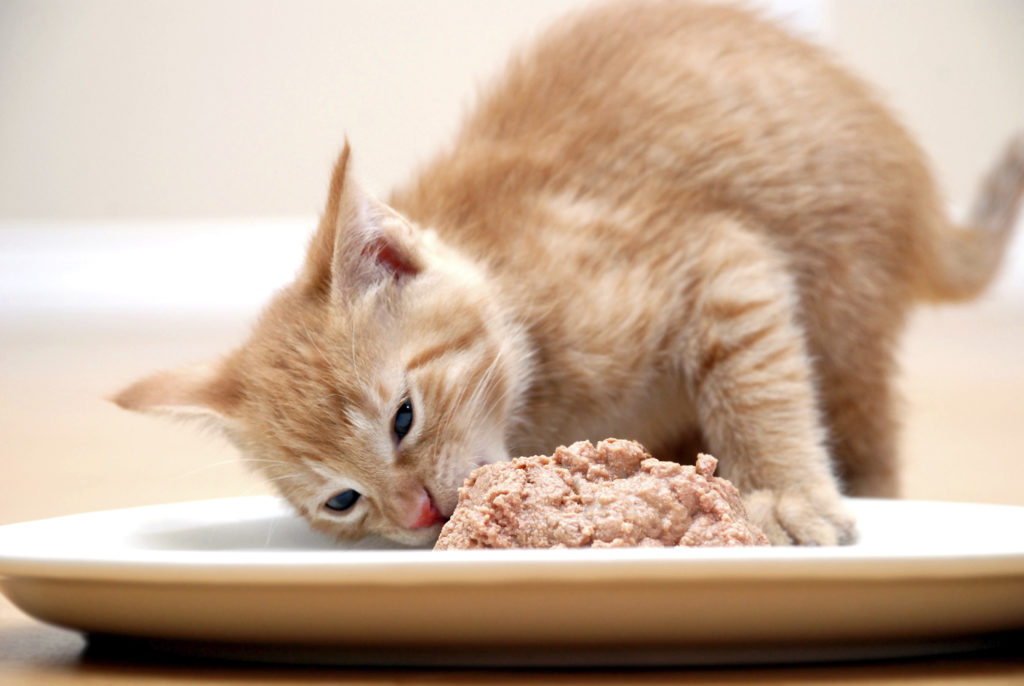
Kitten at 6-12 months
A six-month-old kitten usually weighs 4/5 of its final weight if fed correctly. At this age, he becomes less interested and active. He won’t stop playing but will spend less energy on it. Such a pet should be fed like an adult cat. Therefore, his diet should include porridge, dairy products, soft-boiled eggs, vegetable or chicken broth, and boiled meat. Please pay attention to which foods your animals like best and which they refuse to eat.
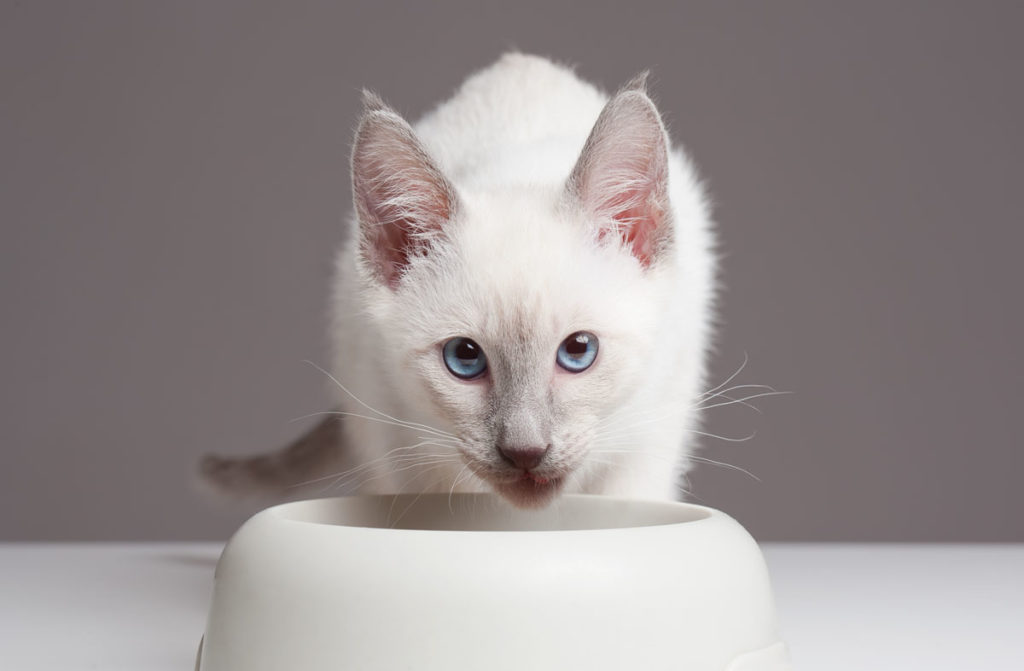
Food and products for feeding kittens
Having decided on the frequency of feeding the babies, all that remains is to choose what to feed. As a rule, kittens can receive three types of food:
- Ready – exceptional food for kittens (dry – in granules or wet – in the form of canned food, liquid cereals, etc.).
- Natural (homemade) – made from products from the owner’s table.
- Mixed – including the above two types of food.
Specialized food is considered the healthiest for kittens since it contains all important vitamins and microelements in optimal dosages. Delicious food from the table cannot satisfy all the needs of a developing organism. In addition, the content of salt, spices, and other food additives can harm the gastrointestinal tract. Despite this, you should wait to buy the first food boxes in the store. Please look at the package’s product description and the kitten’s age.
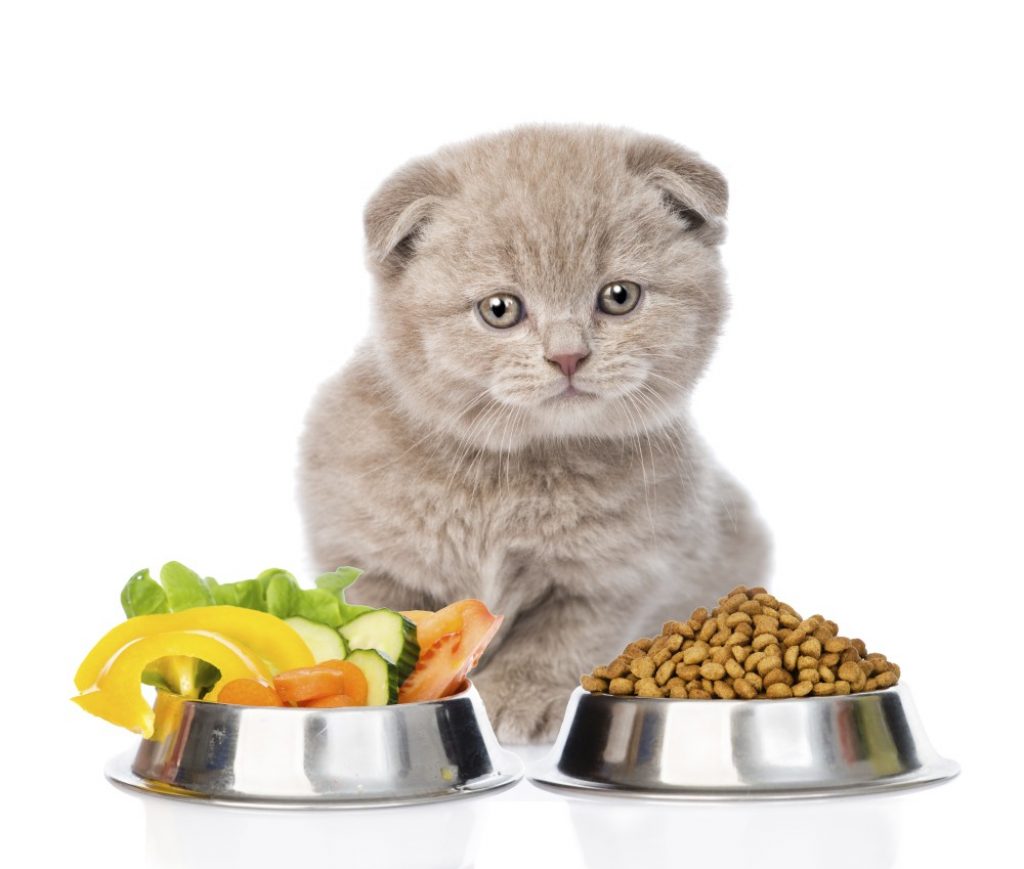
Kittens need to drink enough water, so there should always be a cup of clean water next to their food bowl. If your fur babies don’t drink water after eating dry food, add more liquid food to their daily diet. The main thing is to adhere to the ratio of 1 to 3: for every gram of dry food, the kitten needs 3 milligrams of water.
How many times a day should kittens be fed?
First, it is essential to transition kittens from liquid to dry food gradually. The size of their ventricles can be compared to thimbles, so the portions should initially differ in small volume. At the same time, growing pets are pretty energetic and quickly burn accumulated calories during constant play. To compensate for wasted energy and ensure the full development of babies up to 2 months, they need to be fed 5-6 times a day. After this, the diet changes. So, from the second to the 4th month, you need to feed the fluffies five times a day, from the 4th to the 6th – 4 times, from the 6th to the 8th – 3 times, and after the 8th month – a couple of times a day.

What should you not feed kittens?
A tiny kitten can happily eat sausages and drink cow’s milk. Despite this, excluding foods that are heavy for a fragile stomach from his diet is recommended.
It is important to know foods that can cause health problems:
- Potato. The body poorly absorbs potato starch, which contributes to the development of gastrointestinal diseases.
- River fish. River fish almost always contain helminths, so it is better to prefer sea fish.
- Legumes. It causes discomfort and bloating in the abdominal area and can cause constipation.
- Low-quality feed. You can sometimes give kittens economy-class food, but not always, as this negatively affects the animal’s health.
- Liver. A small amount of liver can benefit the kitten’s body, as it is rich in vitamins A and D. Frequent feeding of this product to kittens can lead to hypervitaminosis and various diseases.
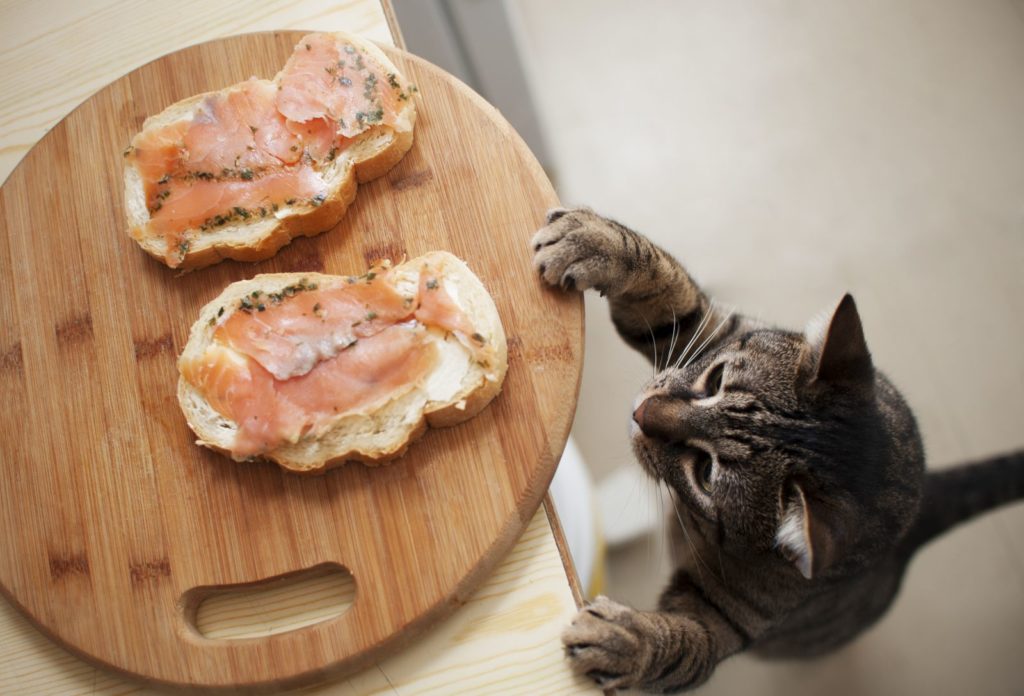
In addition, there are separate lists of prohibited foods for kittens of certain breeds. Some types of food can cause allergies.
Now you know what kitten nutrition should be like. All that remains is to stick to the regime and not spoil the little ones with harmful treats. This will allow you to raise healthy, beautiful, and energetic pets.
Could you watch the video on how to feed kittens correctly?




